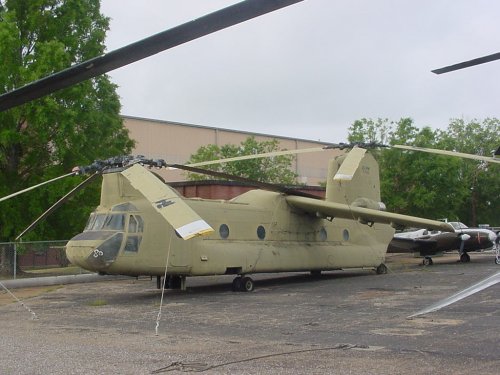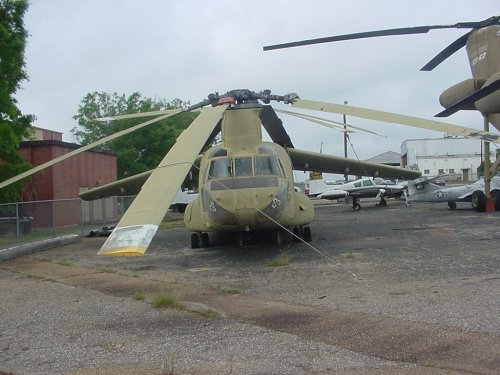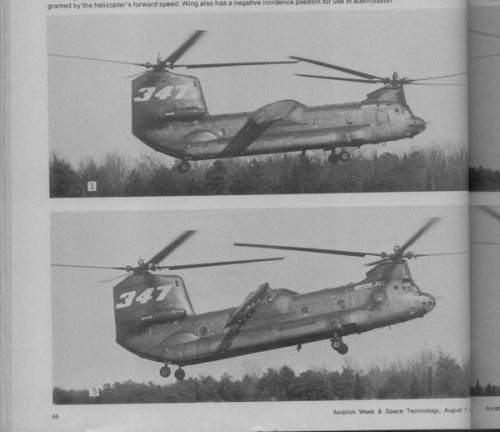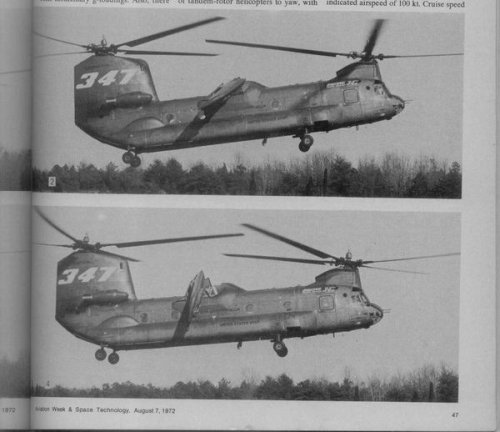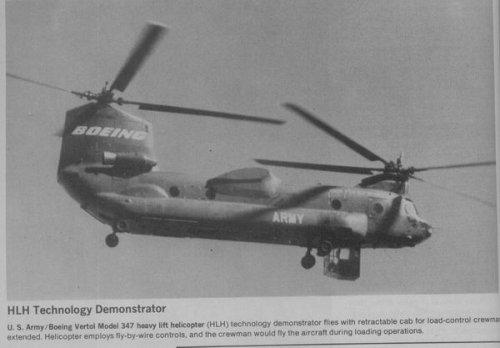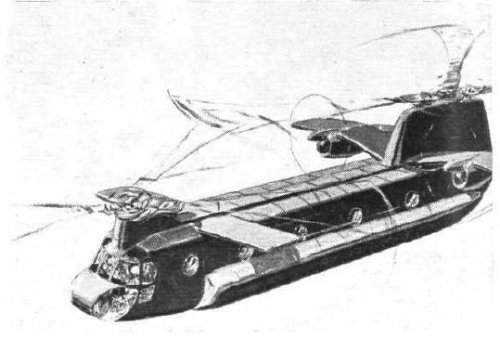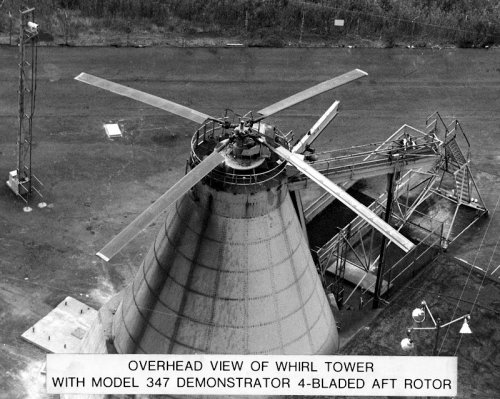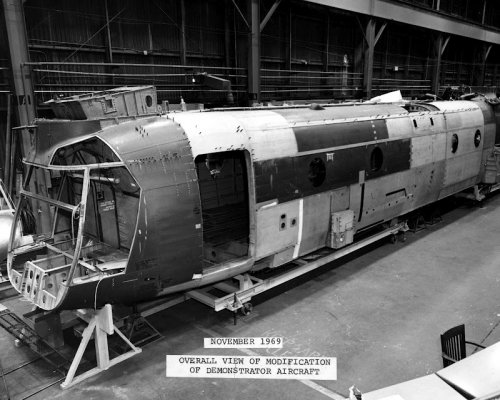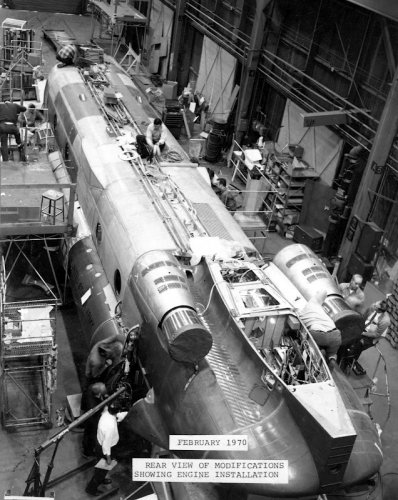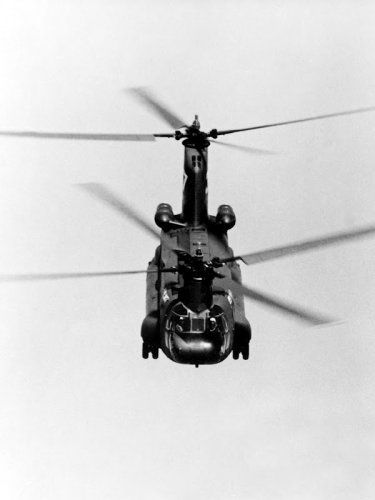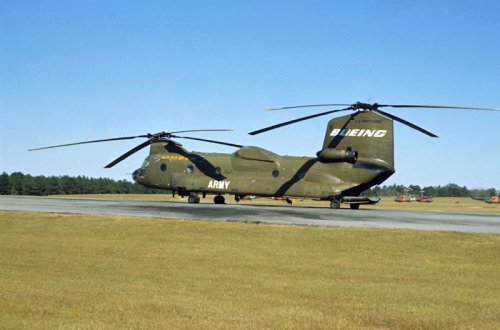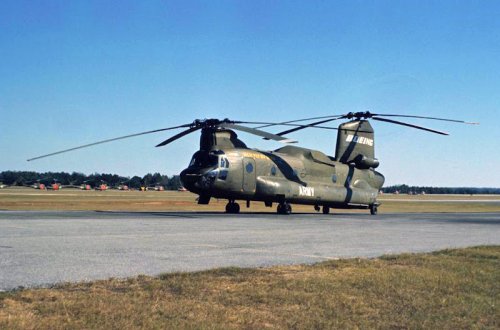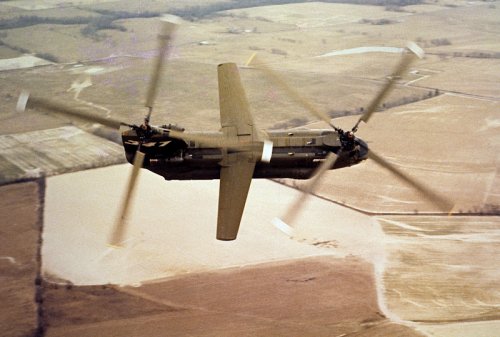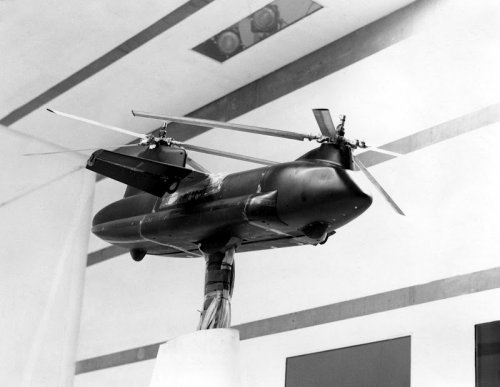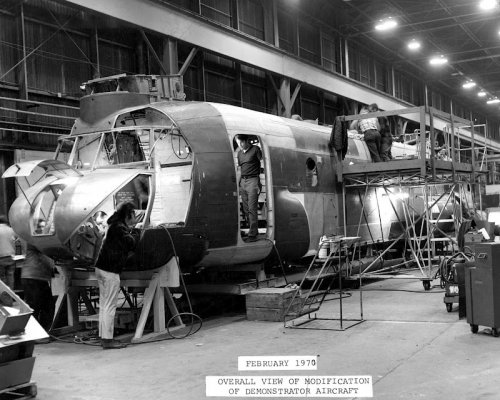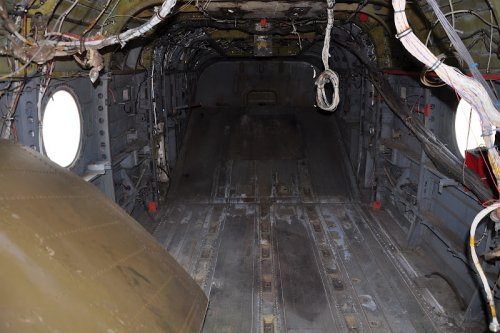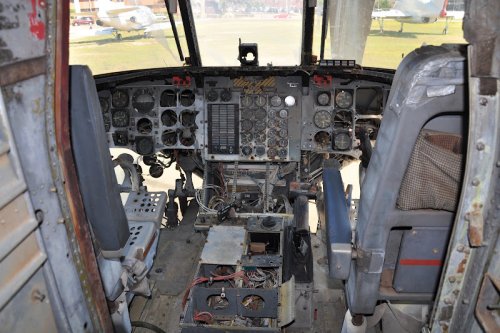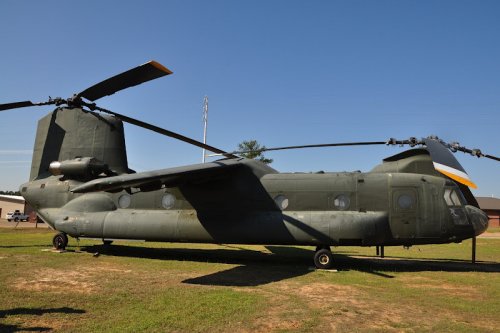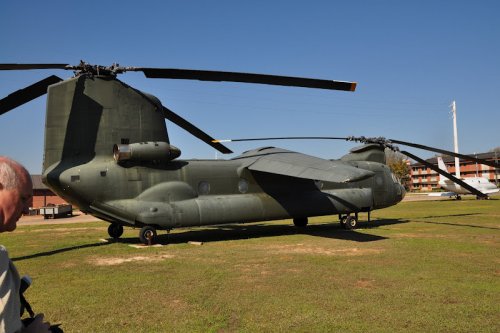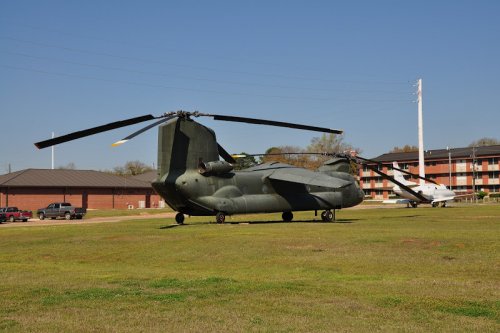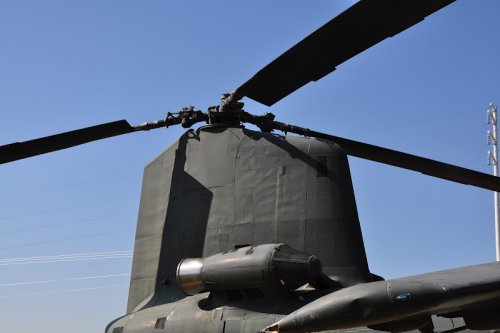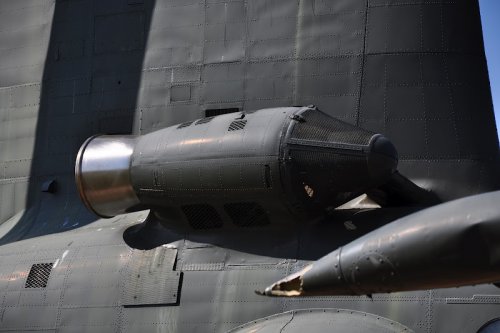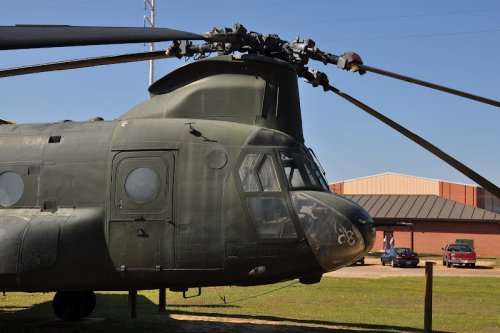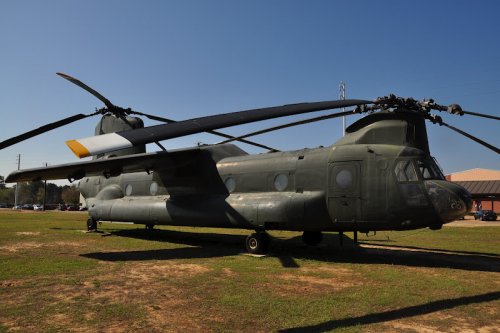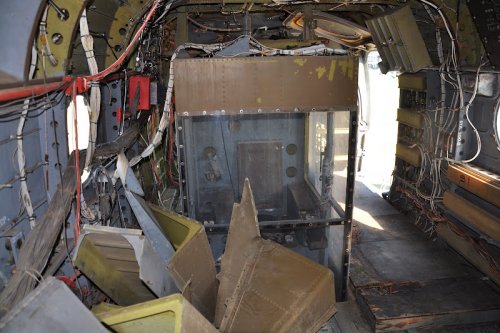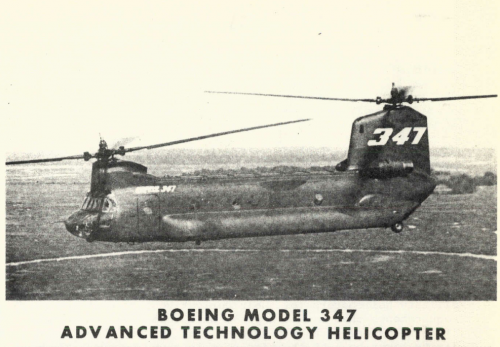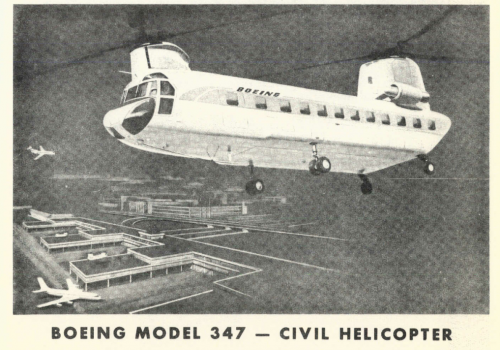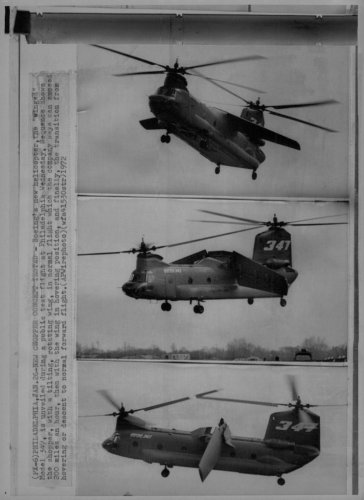Woody
Passionate about the advancement of technology
A Chinook with wings?
http://stinet.dtic.mil/oai/oai?&verb=getRecord&metadataPrefix=html&identifier=AD0909933
Abstract : The US Army Aviation Systems Test Activity conducted the Phase II technical evaluation of the Boeing-Vertol Model 347 winged helicopter during the period 3 through 11 April 1972. The Model 347 winged helicopter, a derivative of the CH-47 transport helicopter incorporating a variable incidence wing with normal acceleration load-sensitive flaps, was tested at the contractor's facility near Philadelphia, Pennsylvania. The evaluation was conducted to determine the improvements provided by addition of a wing system to a transport helicopter. Compliance with the provisions of military specification MIL-H-8501A was determined. Evaluations of the variable incidence wing system and the retractable landing gear system were also made. With the wing in the hover position, out-of-ground-effect hover performance of the Model 347 winged helicopter was similar to the unwinged aircraft. Both the winged and nonwinged Model 347 helicopter could hover out of ground effect using less power than could the CH-47C. Level flight performance at a heavy referred gross weight (54,000 pounds) was improved over both the nonwinged helicopter and the production CH-47C. Addition of the wing to the Model 347 helicopter did not significantly change the generally excellent handling qualities reported for the nonwinged version of the aircraft. The strong longitudinal stability exhibited by the aircraft reduced pilot workload in maintaining trim airspeed and pitch attitude. Only minimal trim changes in all control axes were required when transitioning between climbs or descents and level flight. (Author)
Anyone seen any pictures?
Cheers, Woody
http://stinet.dtic.mil/oai/oai?&verb=getRecord&metadataPrefix=html&identifier=AD0909933
Abstract : The US Army Aviation Systems Test Activity conducted the Phase II technical evaluation of the Boeing-Vertol Model 347 winged helicopter during the period 3 through 11 April 1972. The Model 347 winged helicopter, a derivative of the CH-47 transport helicopter incorporating a variable incidence wing with normal acceleration load-sensitive flaps, was tested at the contractor's facility near Philadelphia, Pennsylvania. The evaluation was conducted to determine the improvements provided by addition of a wing system to a transport helicopter. Compliance with the provisions of military specification MIL-H-8501A was determined. Evaluations of the variable incidence wing system and the retractable landing gear system were also made. With the wing in the hover position, out-of-ground-effect hover performance of the Model 347 winged helicopter was similar to the unwinged aircraft. Both the winged and nonwinged Model 347 helicopter could hover out of ground effect using less power than could the CH-47C. Level flight performance at a heavy referred gross weight (54,000 pounds) was improved over both the nonwinged helicopter and the production CH-47C. Addition of the wing to the Model 347 helicopter did not significantly change the generally excellent handling qualities reported for the nonwinged version of the aircraft. The strong longitudinal stability exhibited by the aircraft reduced pilot workload in maintaining trim airspeed and pitch attitude. Only minimal trim changes in all control axes were required when transitioning between climbs or descents and level flight. (Author)
Anyone seen any pictures?
Cheers, Woody

